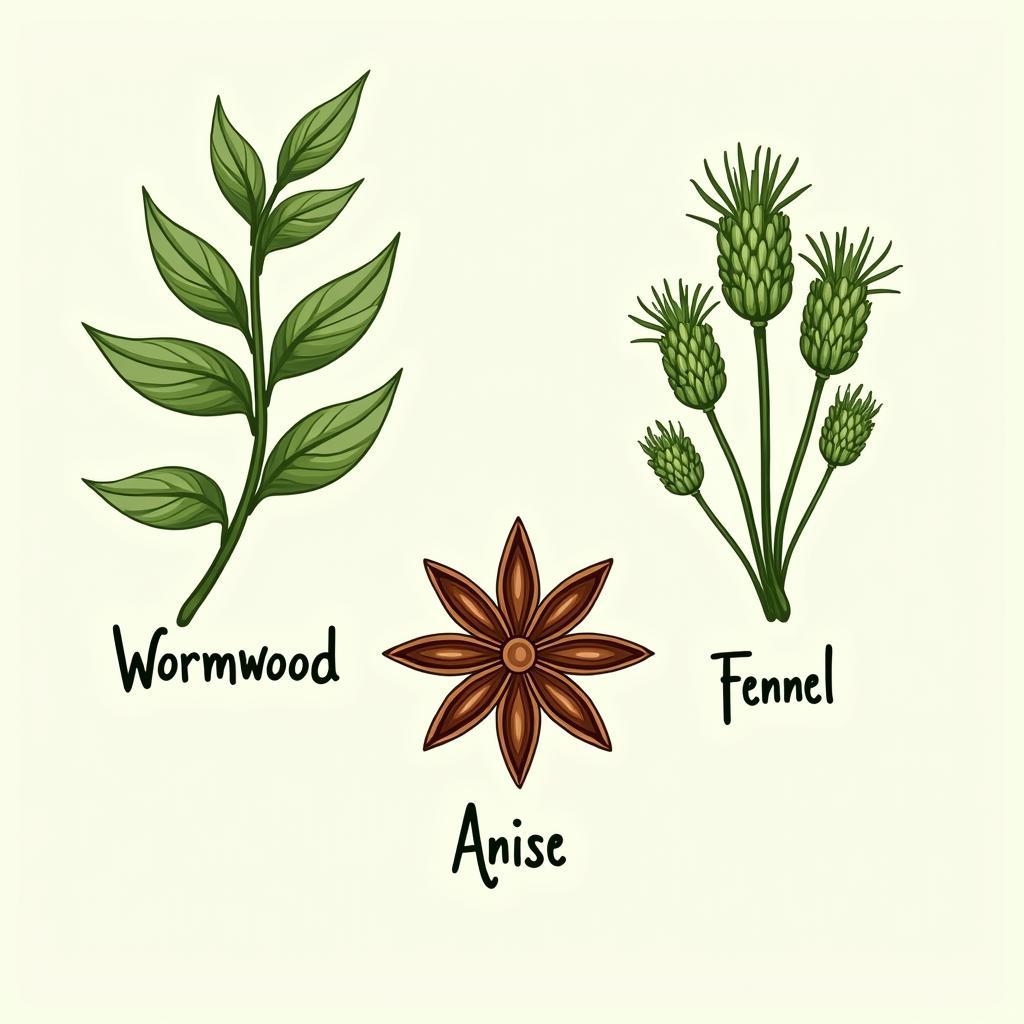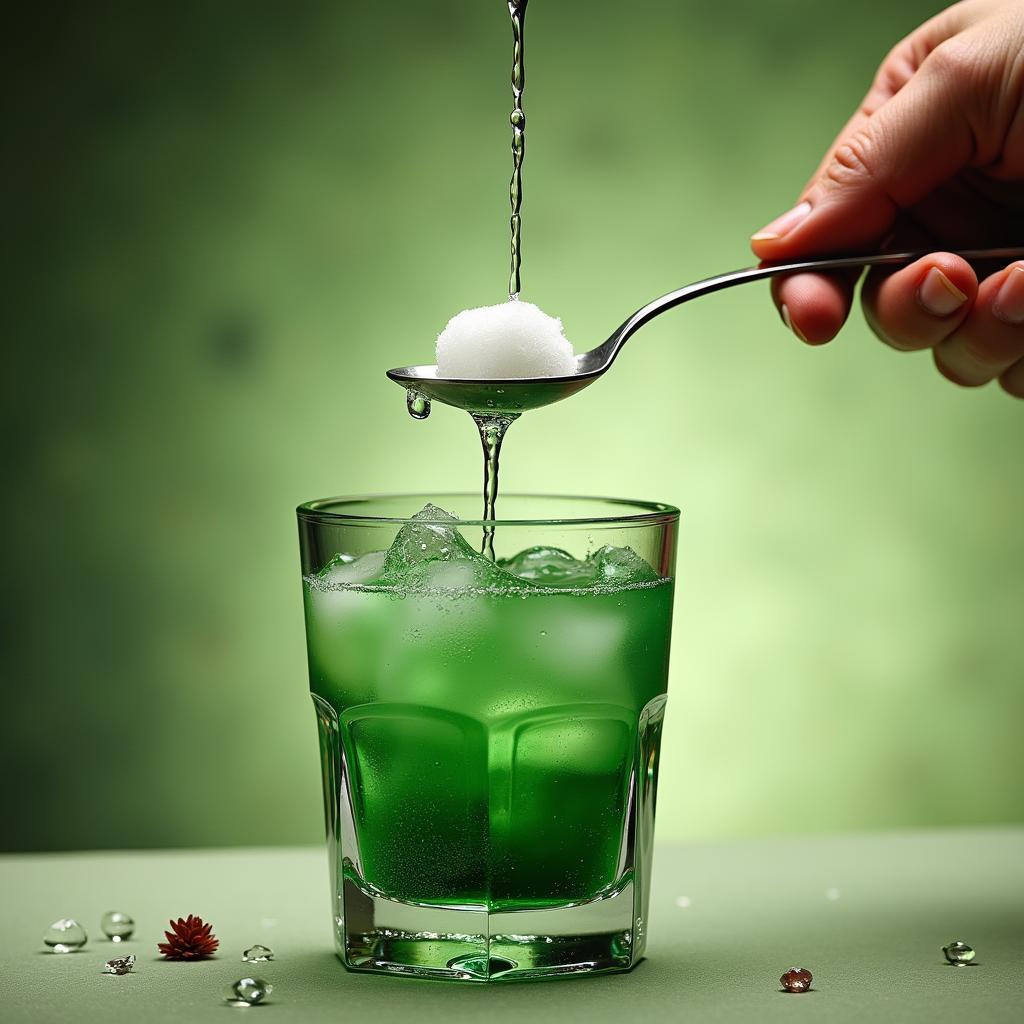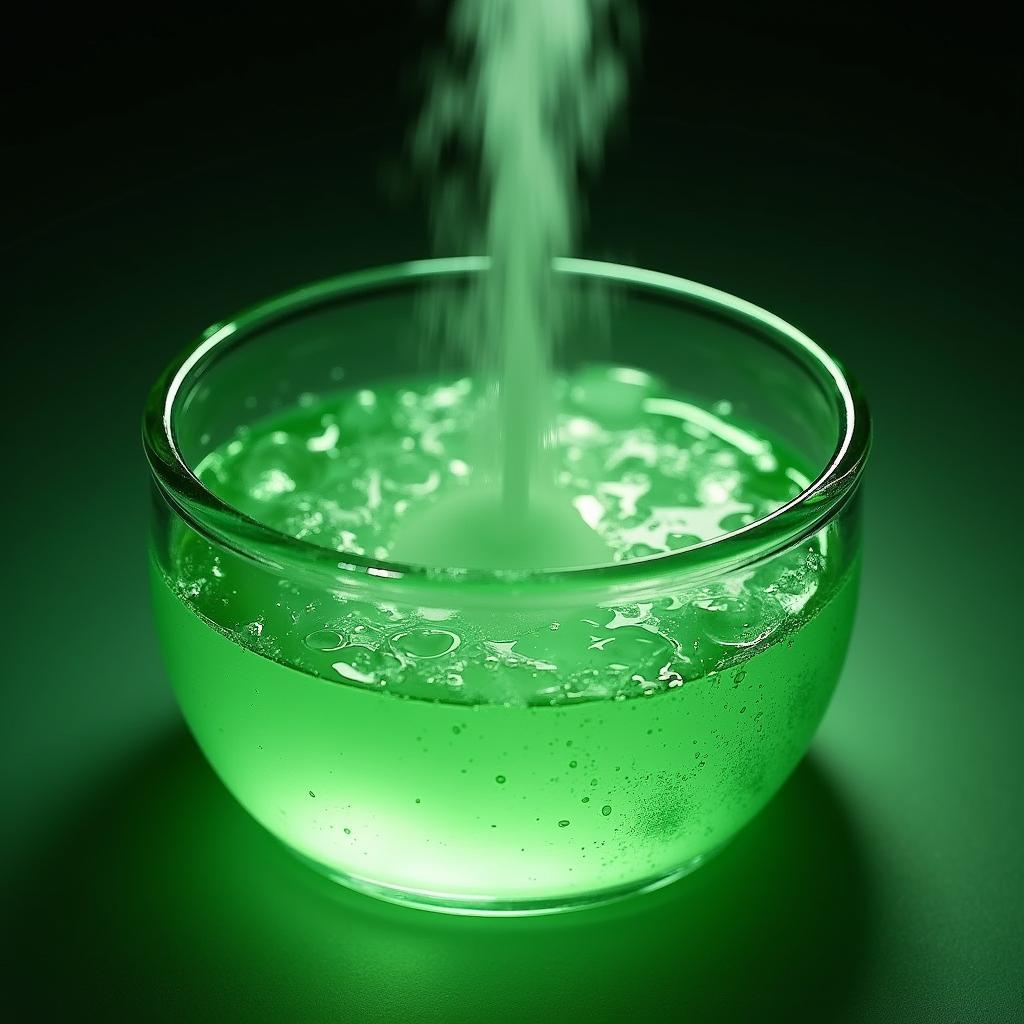
Unlocking the Mystery of the Absinthe Smell
- AmazoniaSilva
- Tháng 1 23, 2025
- Zodiac signs
- 0 Comments
The distinct, almost ethereal Absinthe Smell is as captivating and enigmatic as the drink itself. This aroma, a complex blend of botanicals, evokes a sense of history, artistry, and intrigue. But what exactly creates this unique olfactory experience? Let’s delve into the world of absinthe and uncover the secrets behind its captivating scent.
Deconstructing the Absinthe Smell: A Botanical Journey
The absinthe smell isn’t a simple fragrance; it’s a carefully orchestrated symphony of herbs and spices. The “holy trinity” of absinthe ingredients—wormwood, anise, and fennel—forms the aromatic foundation. Wormwood, with its slightly bitter, herbal notes, contributes a distinctive earthy quality. Anise and fennel, on the other hand, lend their sweet, licorice-like aromas, adding a touch of warmth and sweetness to the overall scent.
Beyond the Trinity: Exploring the Supporting Cast
While the trinity plays a starring role, other botanicals contribute to the absinthe smell’s complexity. These can include hyssop, lemon balm, star anise, and angelica root, each adding its own subtle nuance. Hyssop brings a minty freshness, while lemon balm offers a citrusy lift. Star anise intensifies the licorice notes, and angelica root provides an earthy, grounding aroma. This intricate blend creates a fragrance that is both familiar and utterly unique.
 Absinthe Botanicals: Wormwood, Anise, and Fennel
Absinthe Botanicals: Wormwood, Anise, and Fennel
The Role of Thujone in the Absinthe Smell
Often shrouded in myth and misconception, thujone, a compound found in wormwood, is frequently associated with absinthe’s psychoactive properties. While thujone does contribute a slightly bitter, medicinal note to the aroma, its impact on the overall scent is often overstated. Modern absinthe contains only trace amounts of thujone, well within safe limits, and its contribution to the smell is subtle.
Separating Fact from Fiction: Debunking the Thujone Myth
Contrary to popular belief, thujone is not the primary driver of the absinthe smell. The complex interplay of various botanicals, rather than a single compound, is what creates its captivating aroma. The “hallucinogenic” effects attributed to absinthe in the past were likely due to other factors, such as high alcohol content and the ritualistic nature of its consumption.
 Traditional Absinthe Preparation
Traditional Absinthe Preparation
The Art of Appreciating the Absinthe Smell
Experiencing the absinthe smell is a sensory journey. The initial whiff is often dominated by the anise and fennel, followed by the subtle earthiness of wormwood and the supporting botanicals. Adding water to absinthe unlocks further aromatic nuances, as the essential oils become more volatile, releasing their full fragrance. This transformation, known as the louche, enhances the olfactory experience.
The Louche: A Visual and Aromatic Transformation
The louche isn’t just a visual spectacle; it’s a crucial part of appreciating the absinthe smell. As the water mingles with the absinthe, the previously clear liquid becomes opalescent, releasing a cloud of aromatic complexity. This is the moment when the full spectrum of the absinthe smell reveals itself, offering a truly immersive sensory experience.
“The louche is more than just a pretty effect; it’s the key to unlocking the full aromatic potential of absinthe,” says Jean-Baptiste Lafite, a renowned absinthe distiller. “It’s a delicate dance between water and spirit, revealing the hidden depths of the botanical blend.”
 The Absinthe Louche
The Absinthe Louche
Conclusion: The Absinthe Smell – An Enchanting Enigma
The absinthe smell is more than just a pleasant fragrance; it’s a testament to the artistry and history of this iconic spirit. From the prominent anise and fennel notes to the subtle earthiness of wormwood and the supporting botanicals, each ingredient plays a crucial role in creating the captivating aroma. By understanding the complexity of its botanical composition and the transformative power of the louche, we can truly appreciate the enchanting enigma that is the absinthe smell.
FAQs
- What does absinthe smell like? Absinthe has a complex aroma, primarily characterized by anise and fennel, with hints of wormwood and other botanicals.
- What is thujone, and does it affect the smell of absinthe? Thujone is a compound found in wormwood. While it contributes a slightly bitter note, its impact on the overall aroma is minimal in modern absinthe.
- What is the louche, and how does it relate to the smell of absinthe? The louche is the clouding effect that occurs when water is added to absinthe. This process releases the essential oils, enhancing the aromatic experience.
- What are the main botanicals used in absinthe? The “holy trinity” of absinthe includes wormwood, anise, and fennel. Other botanicals like hyssop, lemon balm, and star anise can also be used.
- Is absinthe hallucinogenic? No, modern absinthe contains only trace amounts of thujone and is not hallucinogenic.
Need more assistance? Contact us at [email protected] or visit our office at Fifth Avenue, 34th Floor, New York, NY 10118, USA. We have a 24/7 customer support team ready to help.


